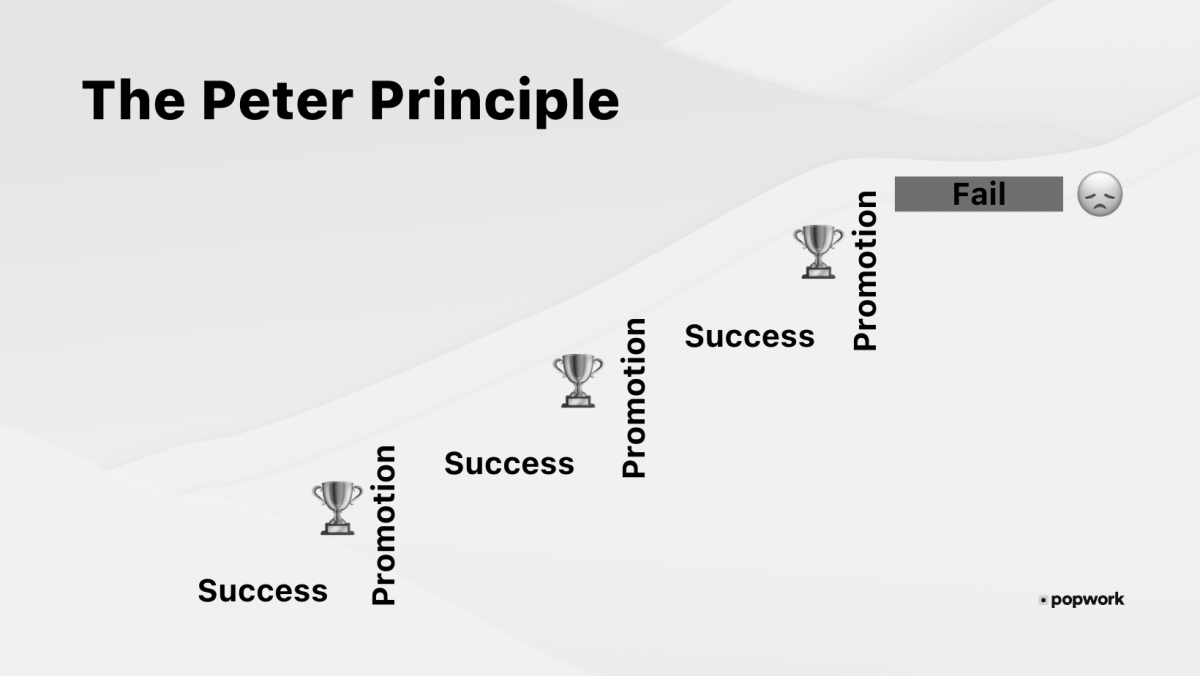Introduction
In the realm of decision-making, the Peter Principle is a concept that sheds light on a common phenomenon: individuals being promoted to positions of incompetence. Coined by Dr. Laurence J. Peter, this mental model explores how people tend to rise to their level of incompetence within hierarchical organizations. Understanding the Peter Principle is crucial for avoiding the pitfalls of misguided promotions and making more informed decisions in various aspects of life. In this blog post, we will delve into the concept’s definition, its psychological underpinnings, real-life examples, strategies for identification and prevention, and the importance of awareness.
Definition and Relevance
The Peter Principle can be defined as the observation that individuals within an organizational hierarchy tend to be promoted to positions based on their performance in their current role until they reach a level where they are no longer competent. This principle highlights the inherent flaws in traditional promotion systems that primarily consider current performance as the sole determinant of future success. It emphasizes the need to evaluate different skill sets required at different levels within an organization to ensure that individuals are placed in roles that align with their capabilities.
Anchored in Human Psychology
The Peter Principle is deeply rooted in human psychology. One contributing factor is the tendency to equate success in a current role with competence for higher-level positions. This cognitive bias, known as the Halo Effect, leads decision-makers to overestimate an individual’s overall ability based on limited information. Additionally, the Dunning-Kruger effect plays a role, as individuals with limited competence often lack the self-awareness necessary to recognize their own limitations. This combination of biases can result in the promotion of individuals who are ill-suited for their new roles.
Examples of the Peter Principle
- Personal Life Decisions: Consider an individual who excels in their technical role and is subsequently promoted to a managerial position. However, their lack of leadership and interpersonal skills hampers their effectiveness in the new role, leading to subpar performance and organizational dysfunction.
- Business Scenarios: In a sales organization, a top-performing salesperson is promoted to a sales management position. However, the skills that made them successful as an individual contributor may not translate into effective leadership, resulting in a decline in team performance and morale.
- Public Policy-Making: In politics, politicians who excel in campaigning may be promoted to positions requiring complex policy formulation and implementation. Their lack of expertise in these areas can hinder effective governance and decision-making, leading to suboptimal policies and outcomes.
Mental Biases and Underpinnings
The Peter Principle is influenced by several cognitive biases. Anchoring bias leads decision-makers to heavily rely on an individual’s current performance as the basis for promotion decisions, without considering the specific competencies required at higher levels. Confirmation bias further exacerbates this issue by selectively seeking evidence that supports the promotion decision while ignoring warning signs of potential incompetence. These biases, combined with the tendency to overvalue past achievements, create a breeding ground for the Peter Principle.
Identifying and Avoiding the Peter Principle
To avoid falling victim to the Peter Principle, it is crucial to consider factors beyond an individual’s current performance when making promotion decisions. Implementing competency-based assessments and evaluations that align with the specific requirements of higher-level positions can help identify individuals with the necessary skills and potential for growth. Regular performance reviews, 360-degree feedback, and mentoring programs can also provide insights into an individual’s suitability for promotion.
Conclusion
The Peter Principle serves as a cautionary mental model, reminding us of the perils of promoting individuals solely based on their current performance without considering their potential for success in higher-level roles. By understanding the psychological biases that contribute to this principle and employing strategies to identify and prevent its occurrence, organizations and individuals can make more informed decisions. Ultimately, being aware of the Peter Principle and actively avoiding this mental trap can lead to more effective leadership, improved organizational performance, and better outcomes in various spheres of life.
